Domingo Esteso - 1933
Domingo Esteso - 1933
Details
Details
Overview
Overview
Shipping important note
Shipping important note
Delivery times are typically reliable and most instruments arrive within the estimated timeframe.
Should any unexpected delay occur, our team will keep you informed and provide support at every step. For all shipping details and exceptions, please see our Shipping Policy.
Details about GPSR
Details about GPSR
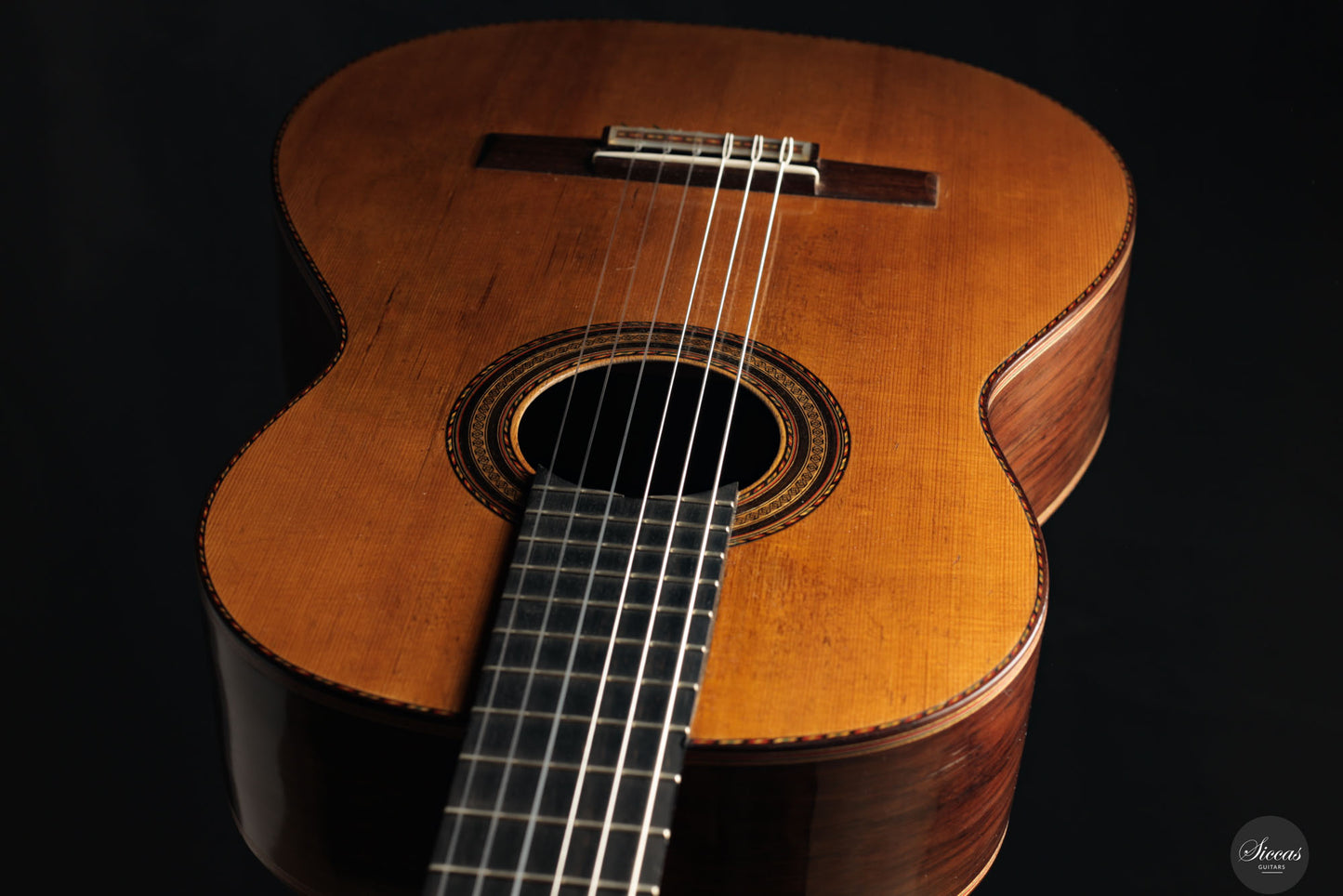
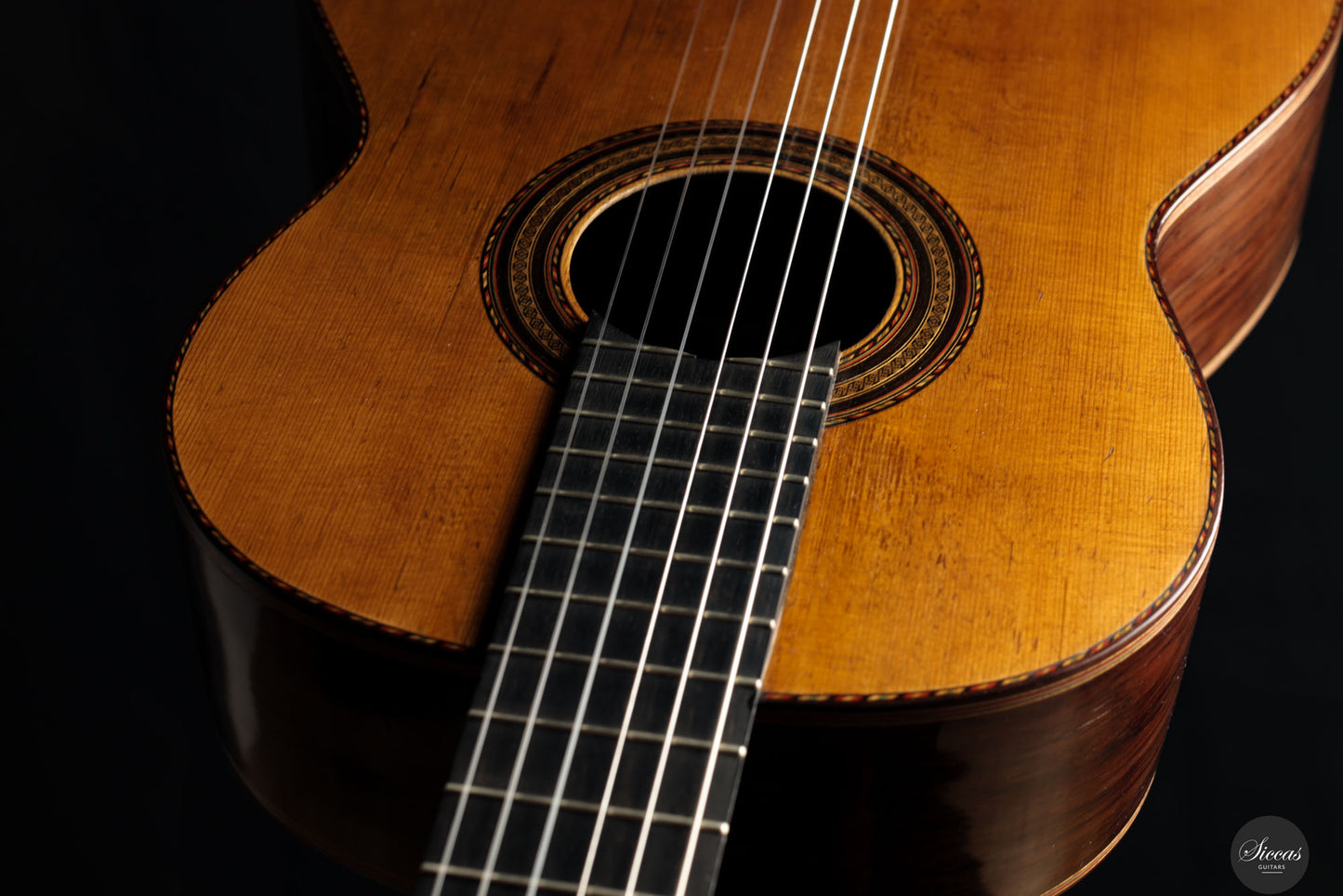
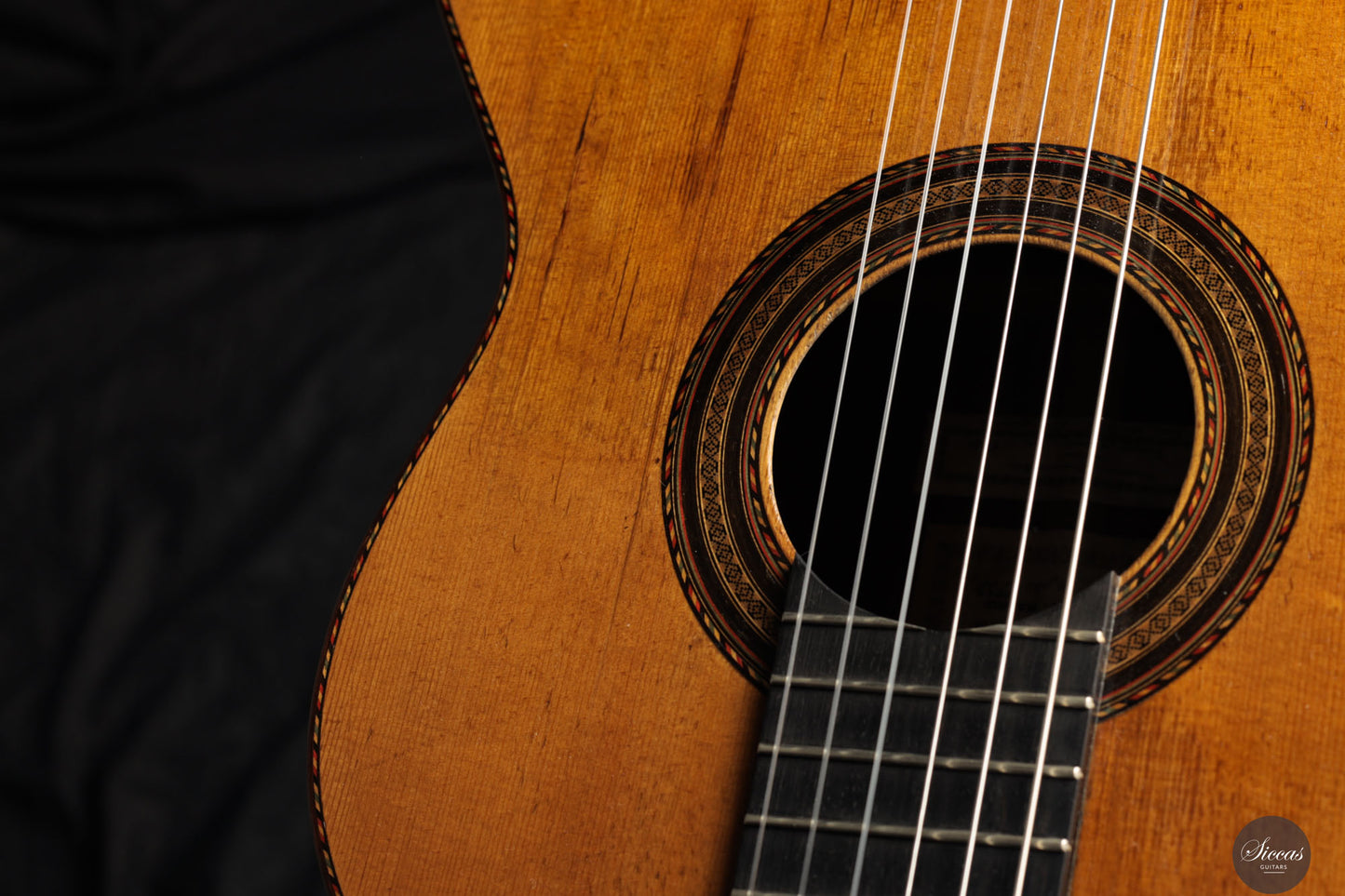
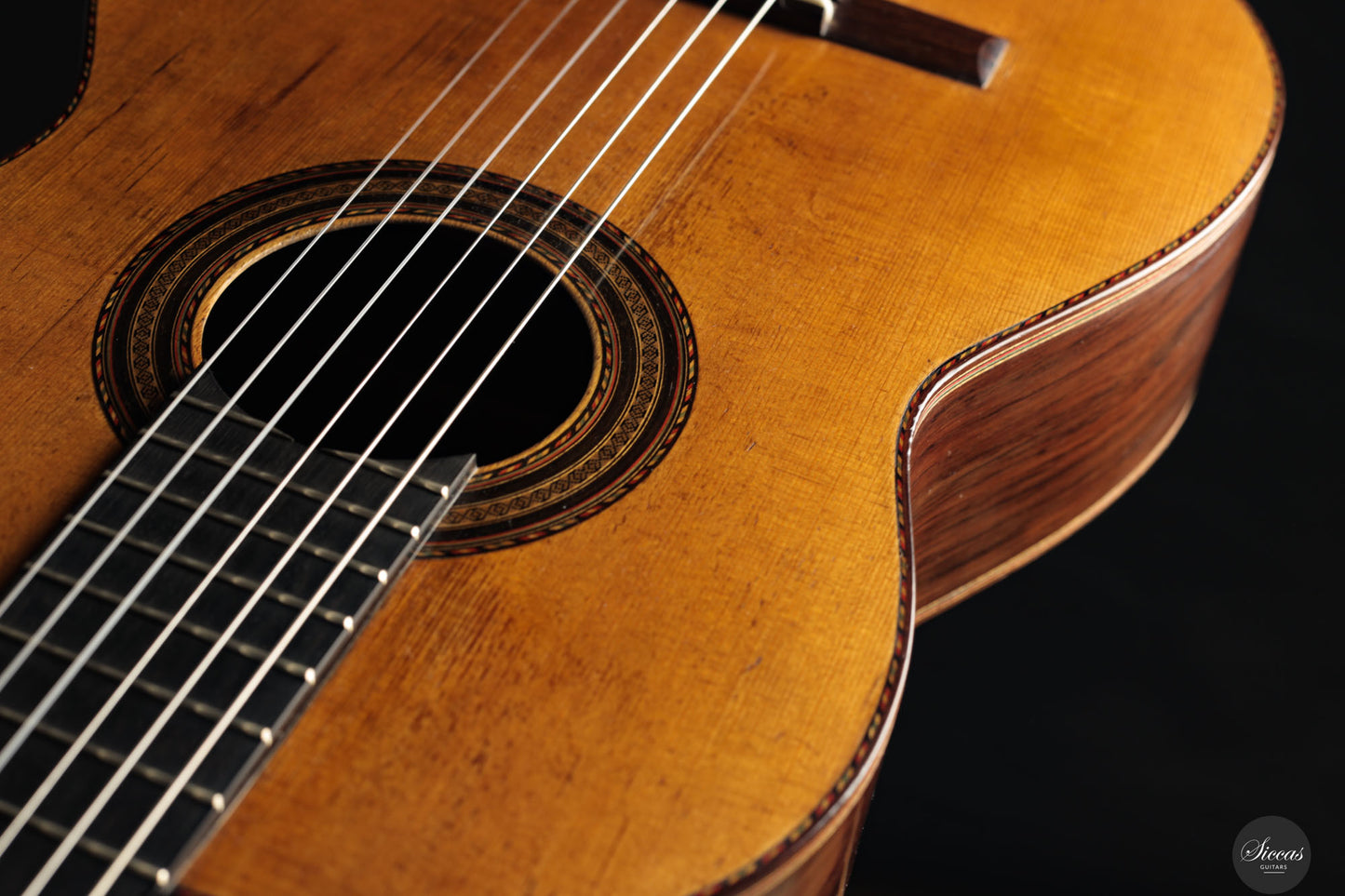
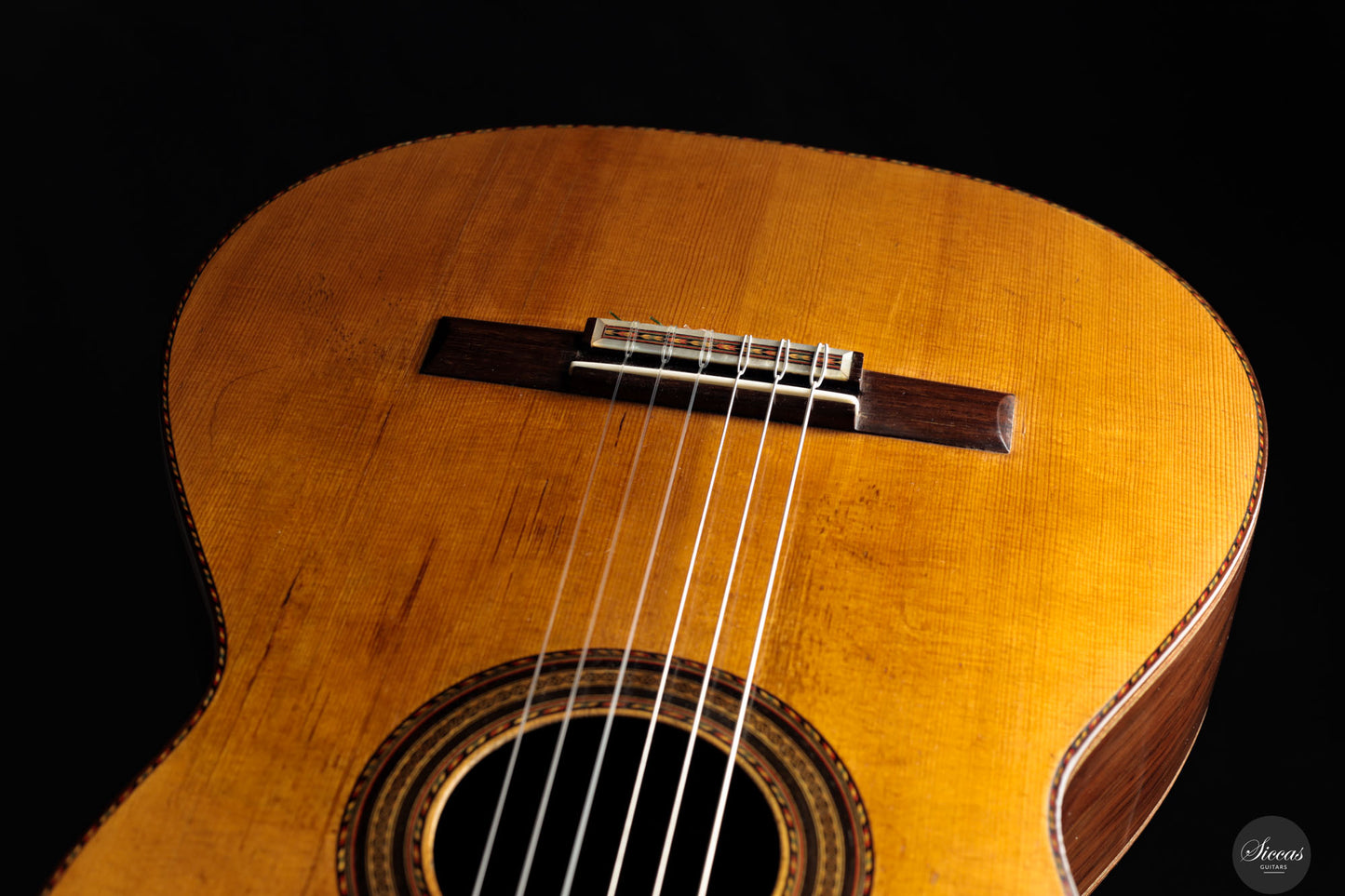
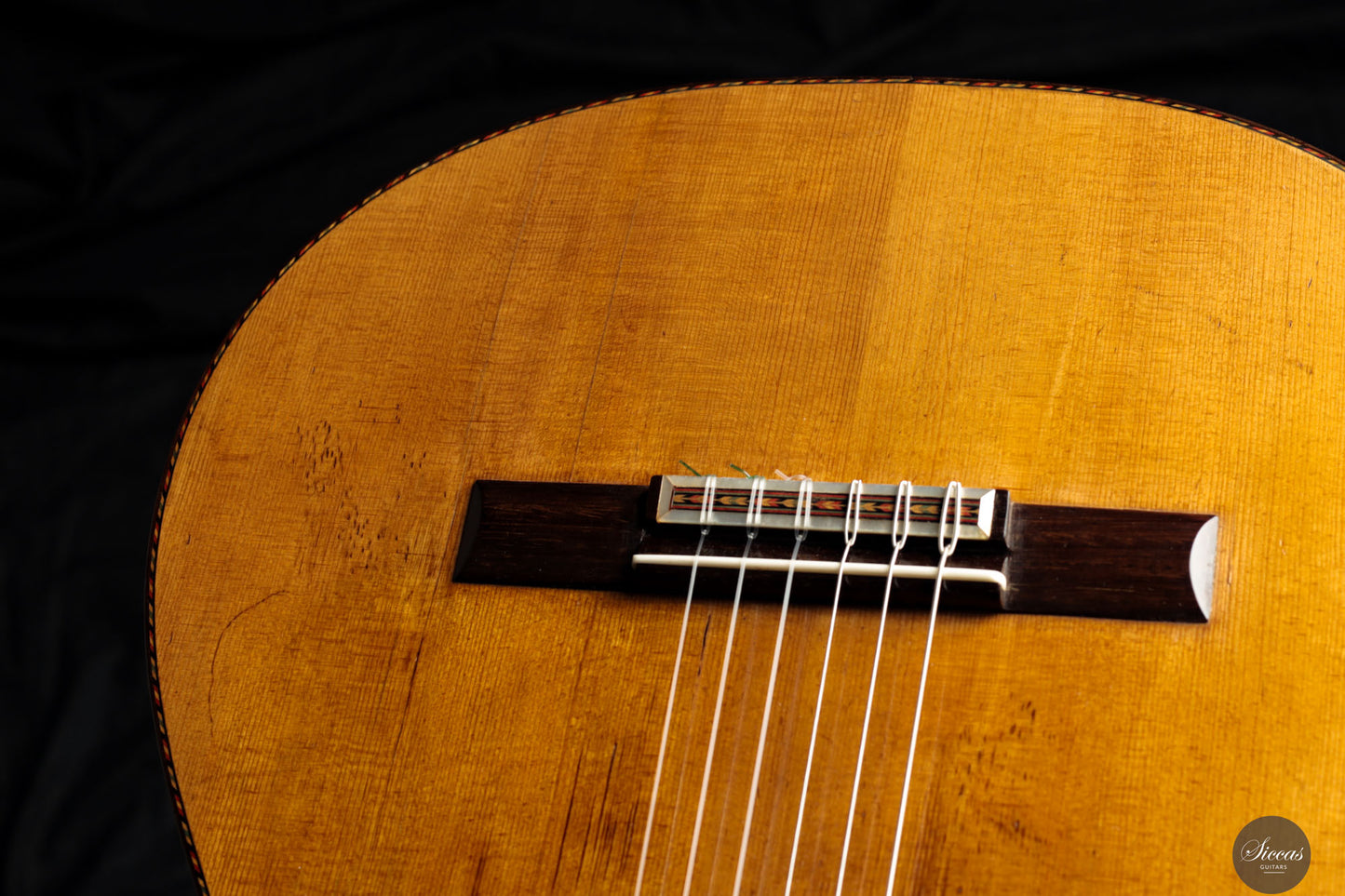
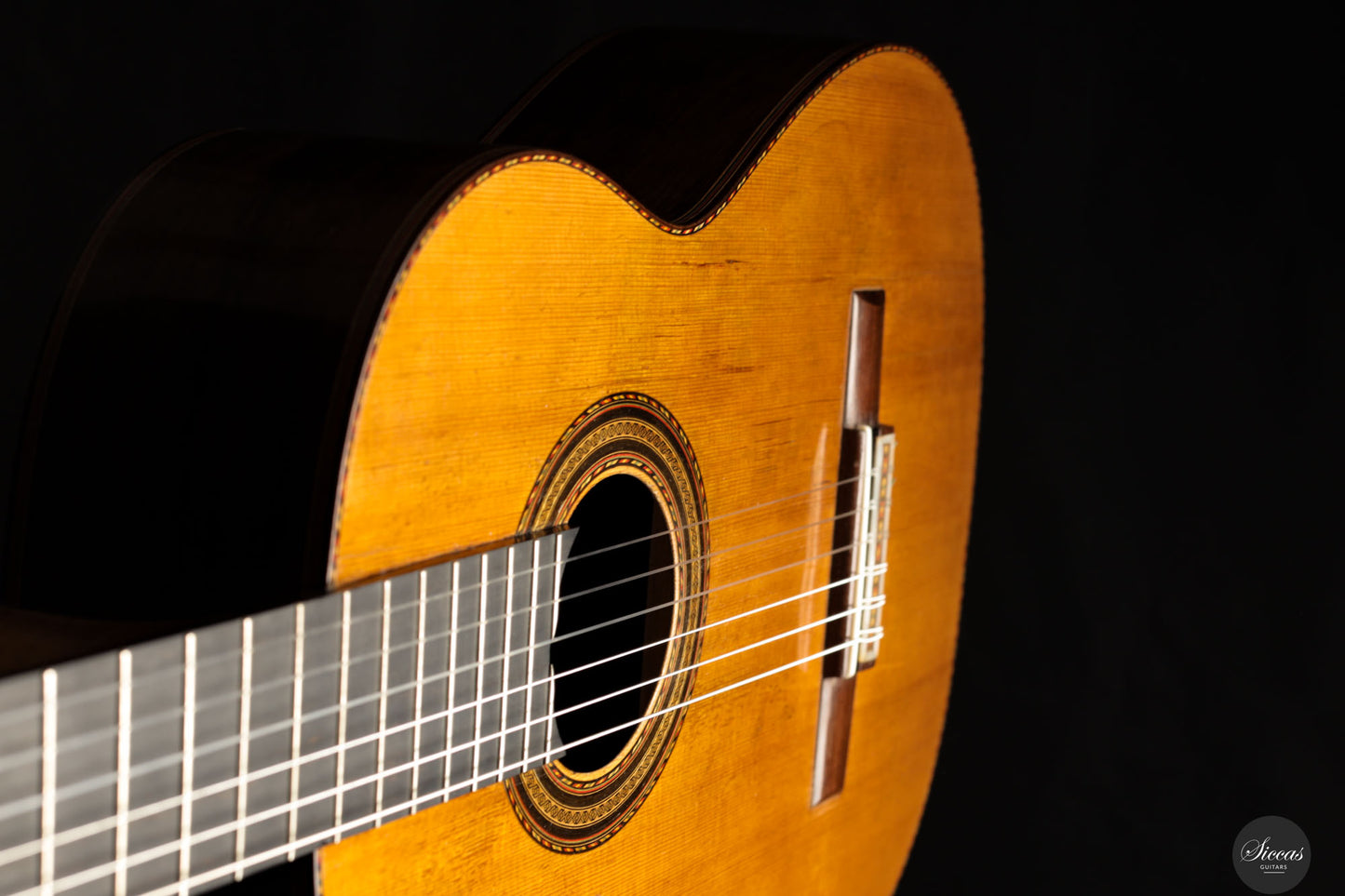
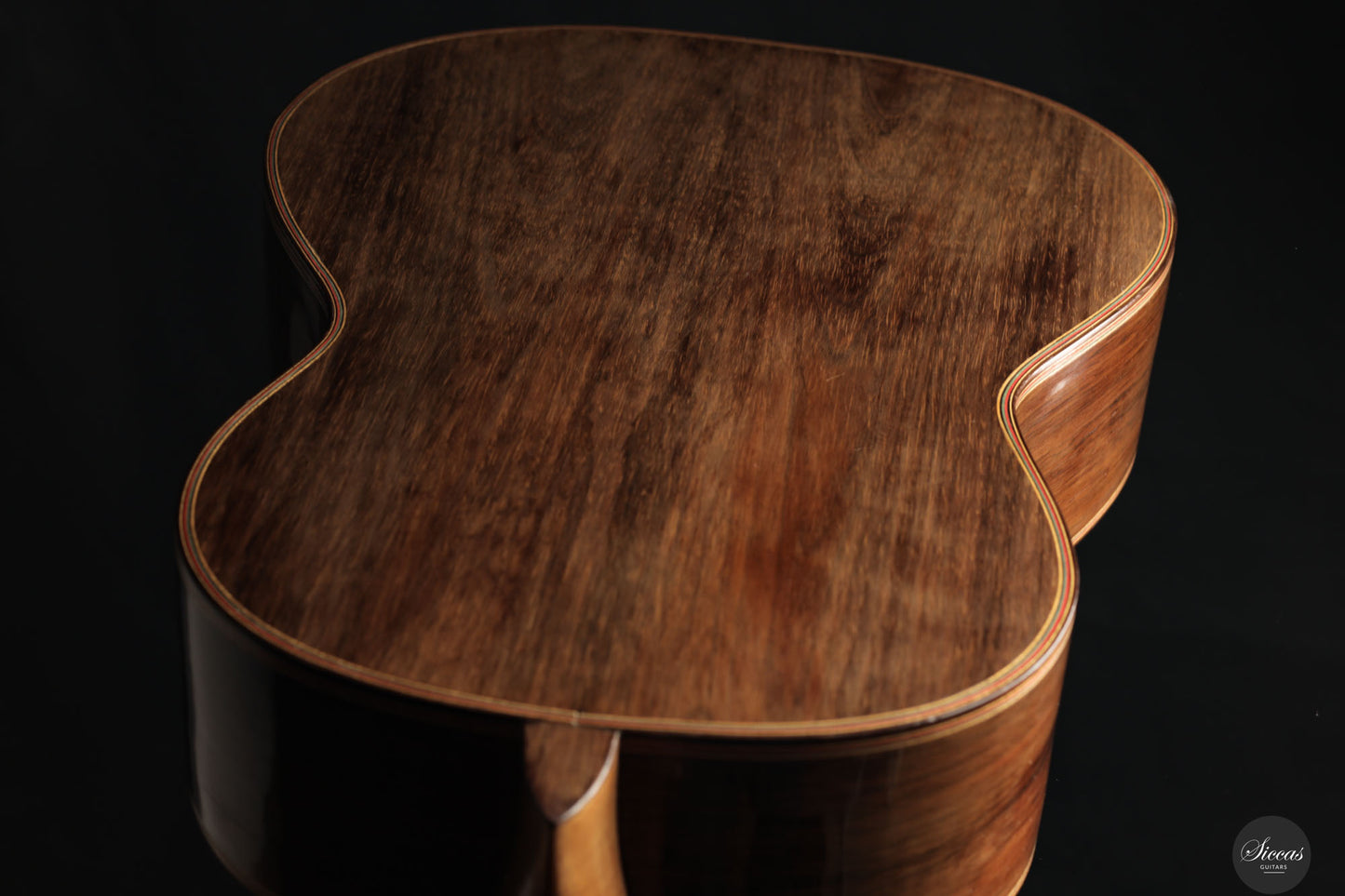
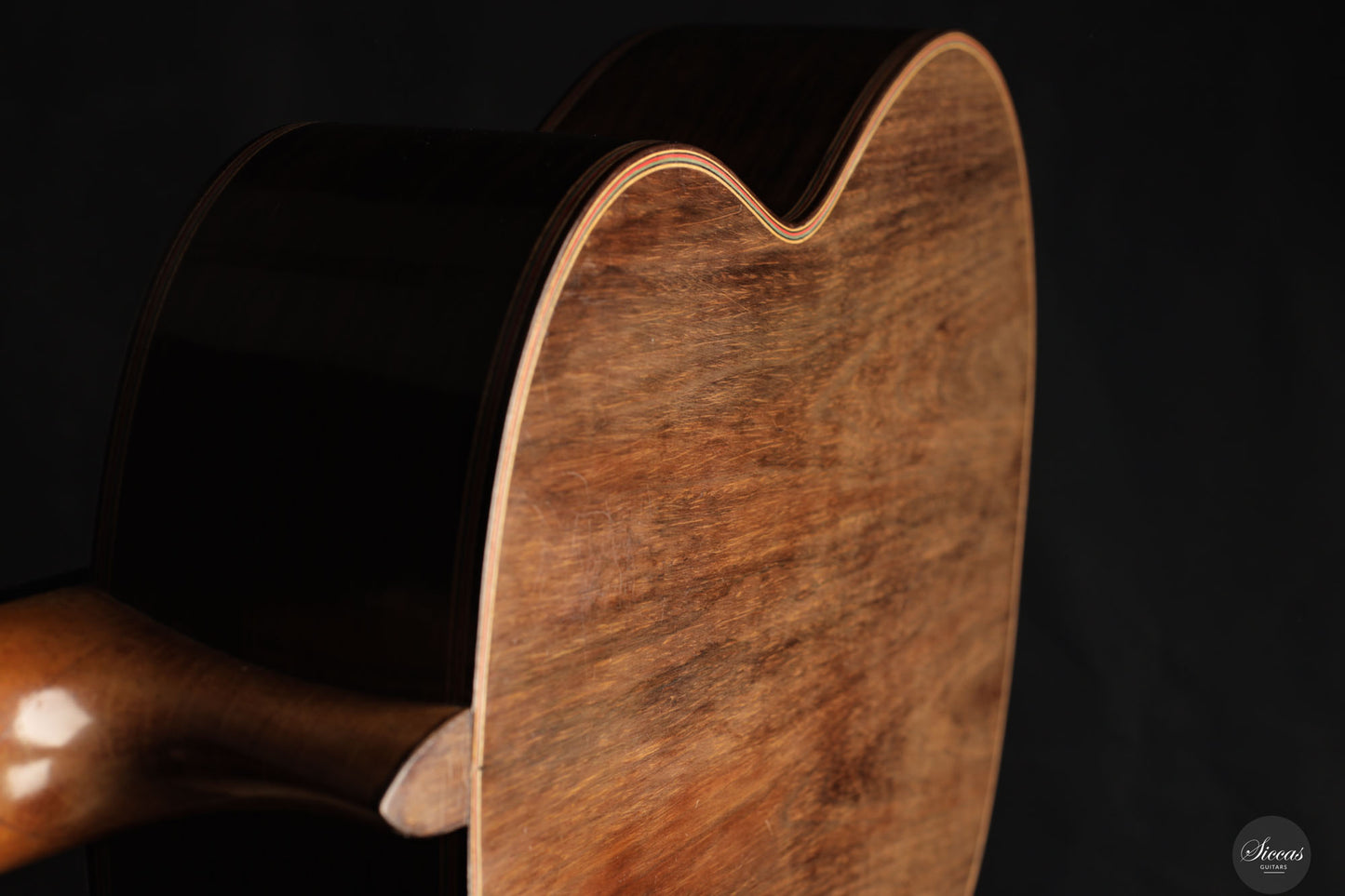
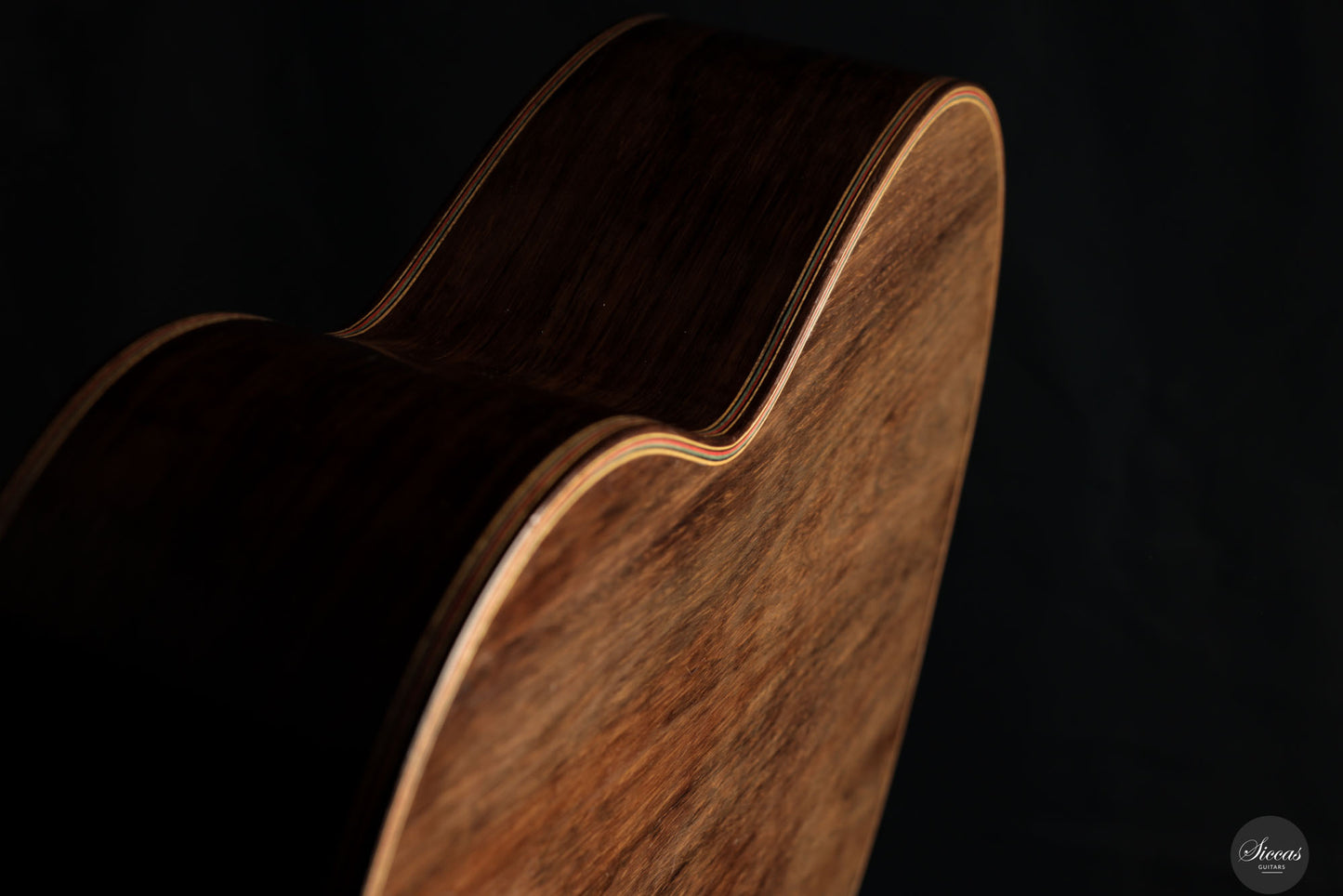
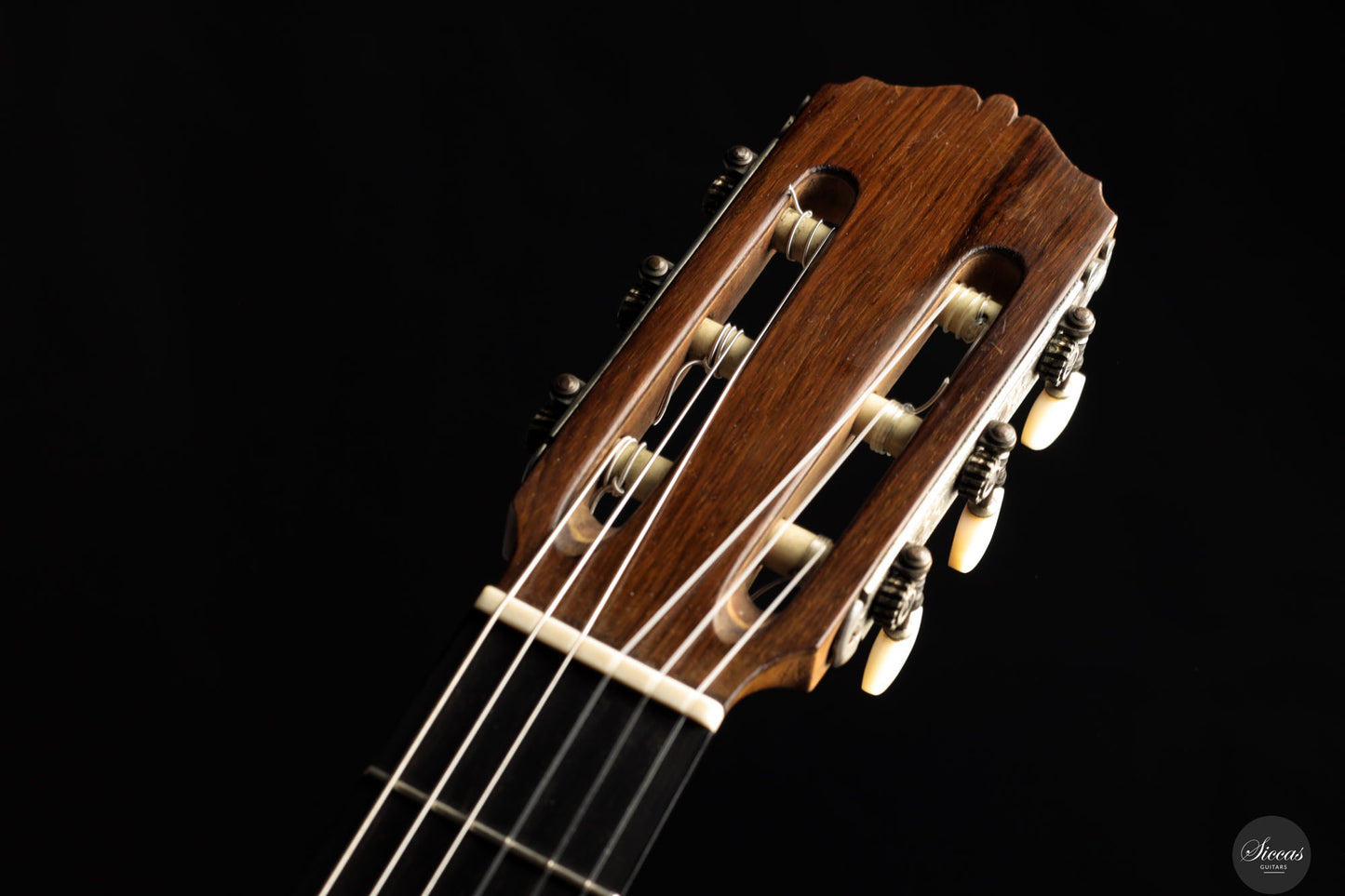
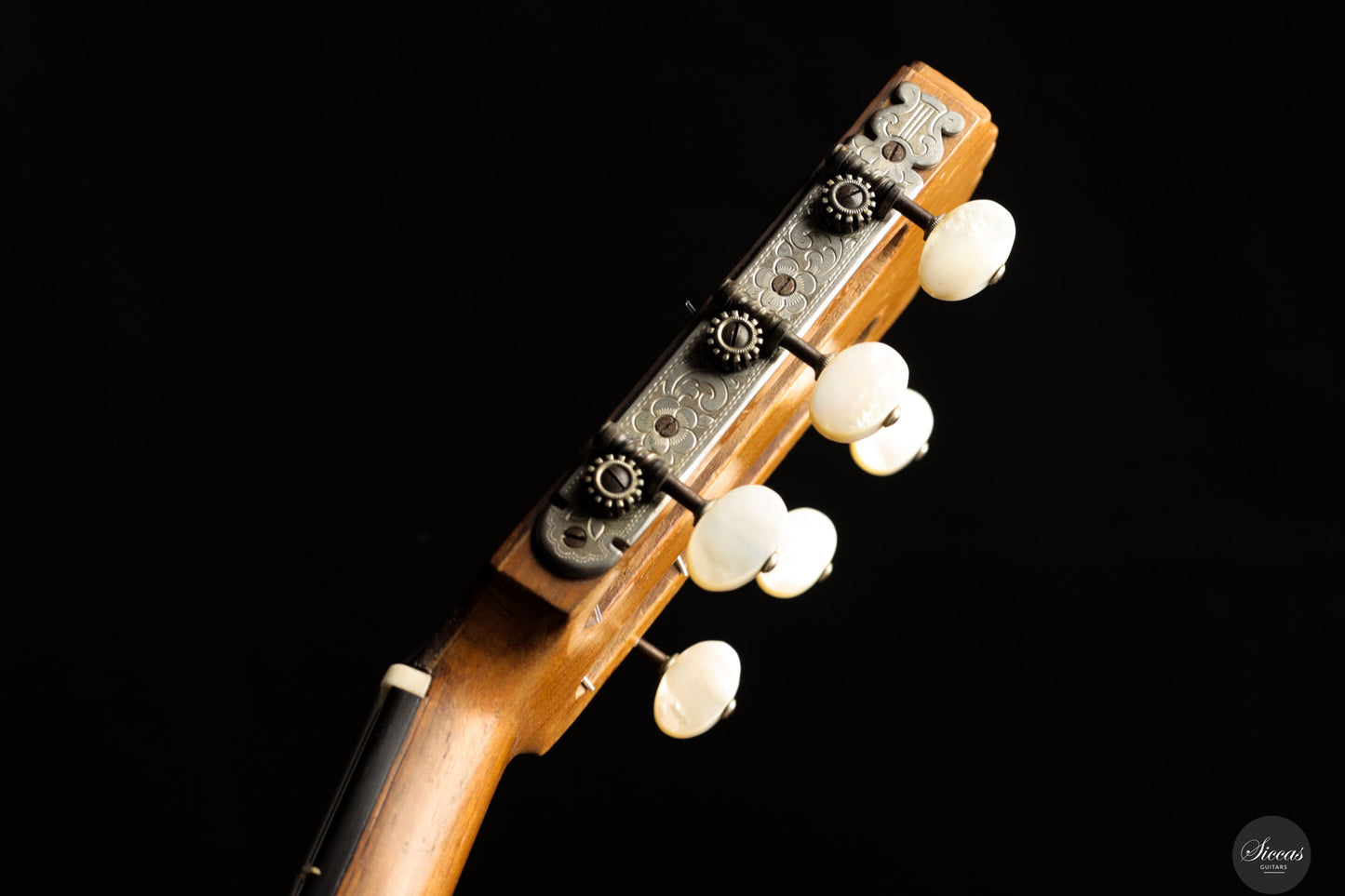
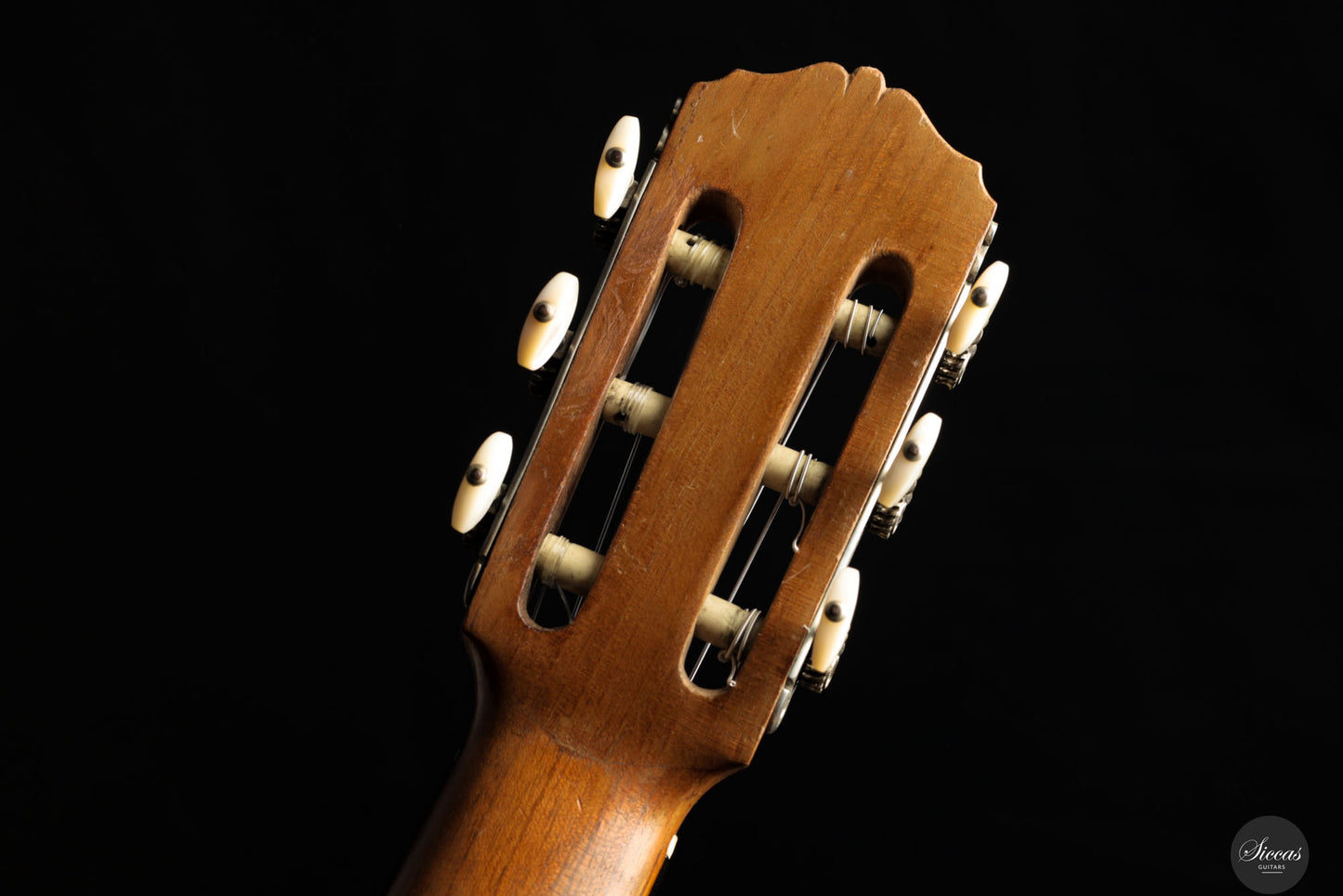


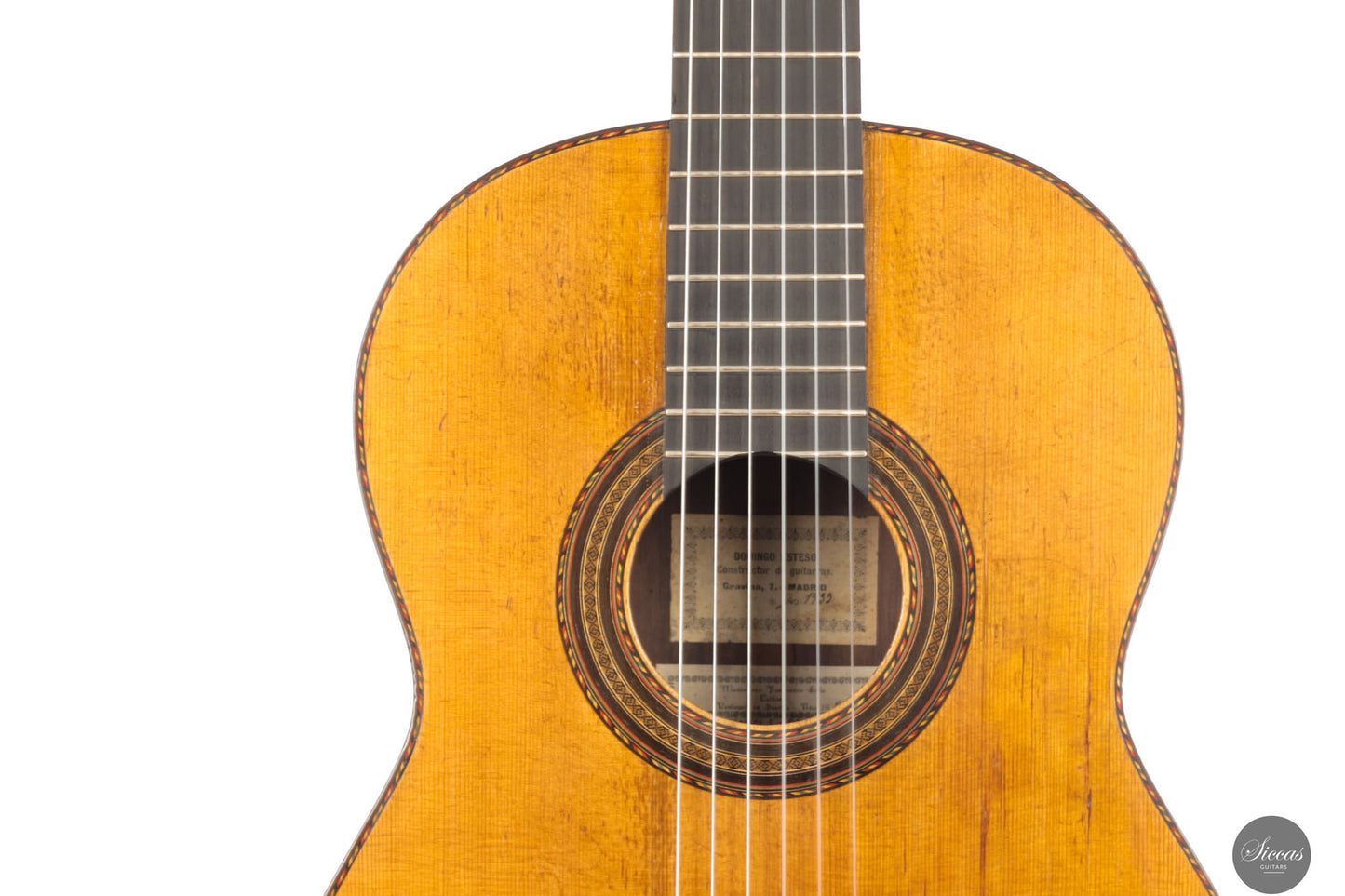
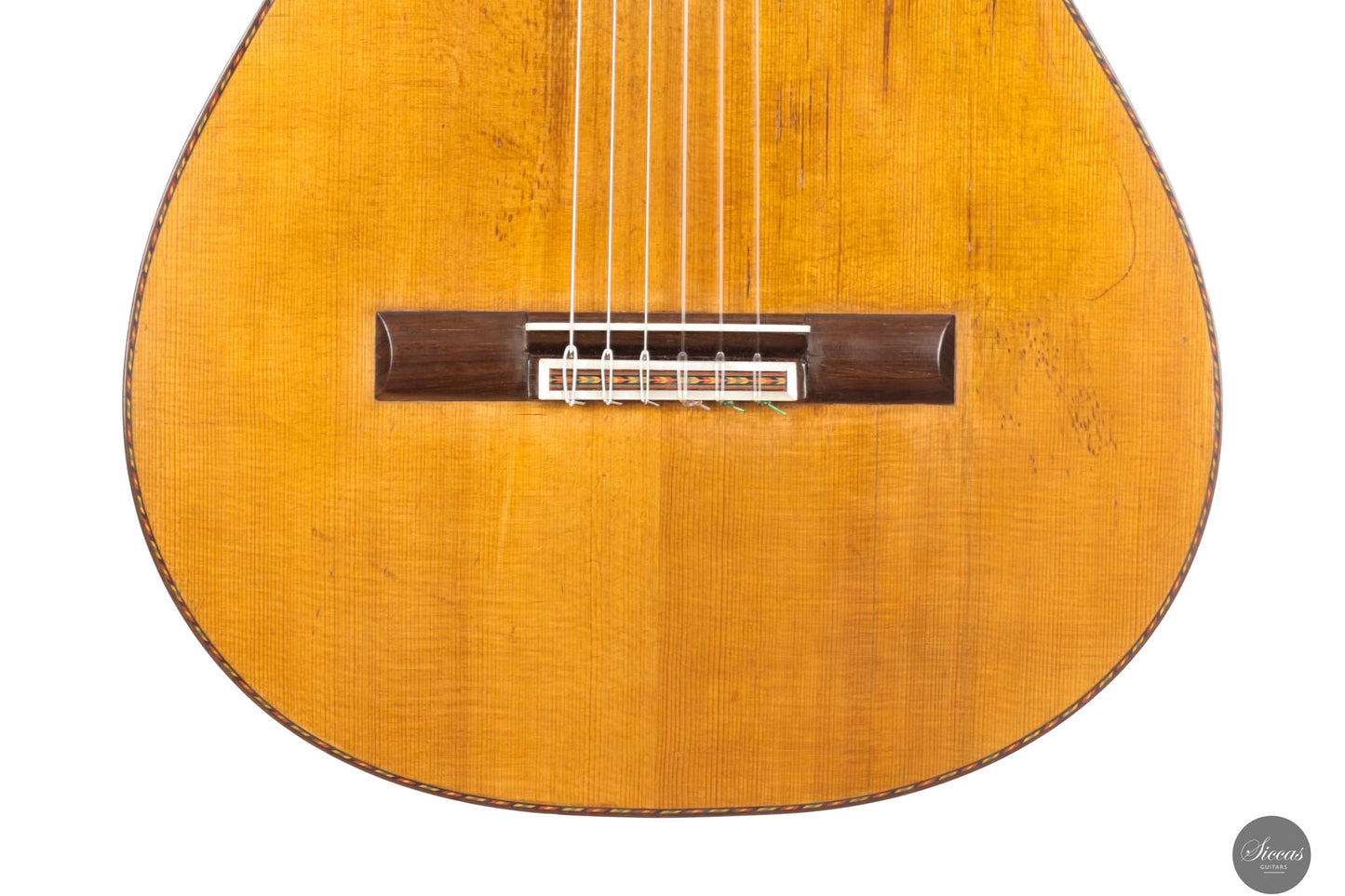
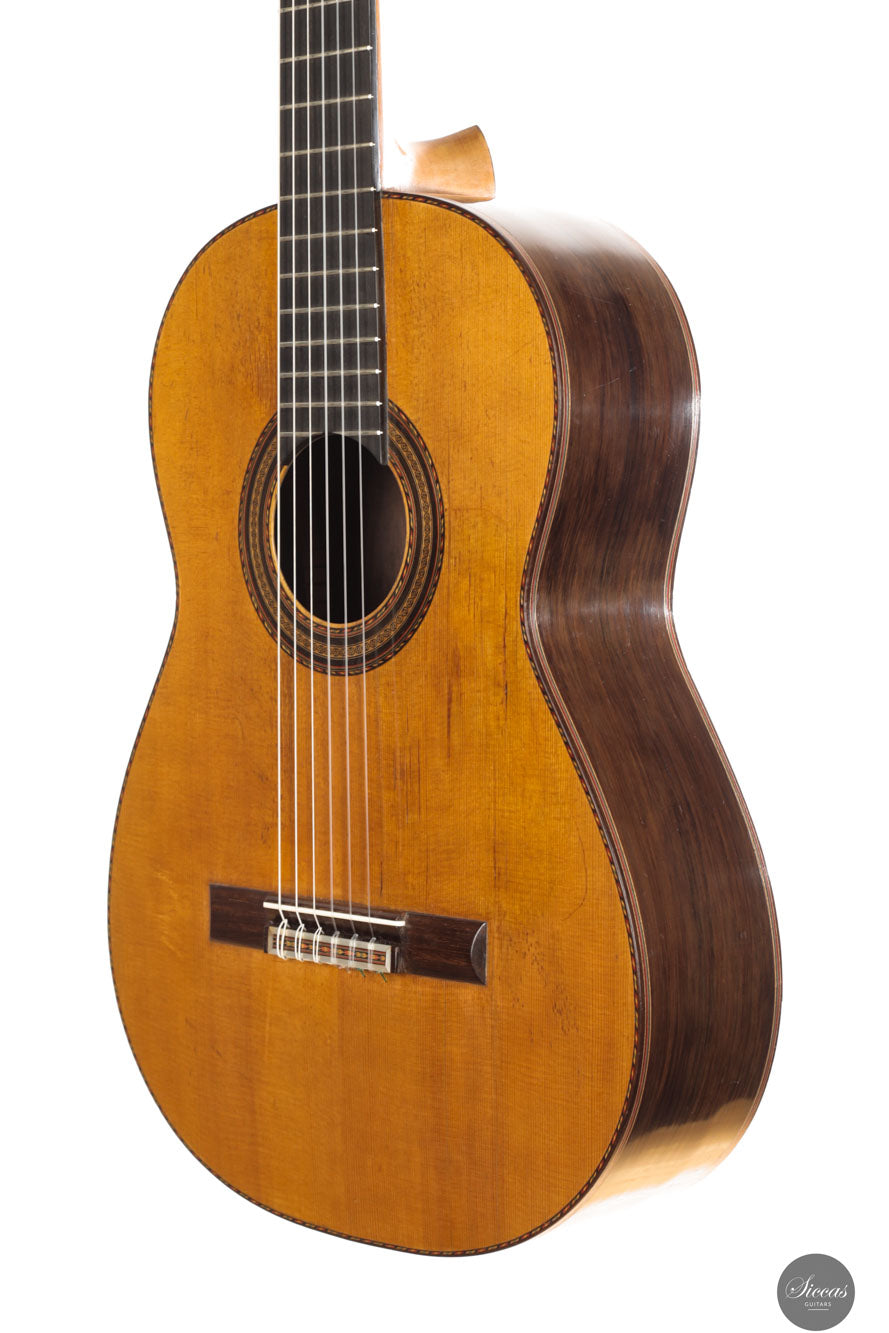
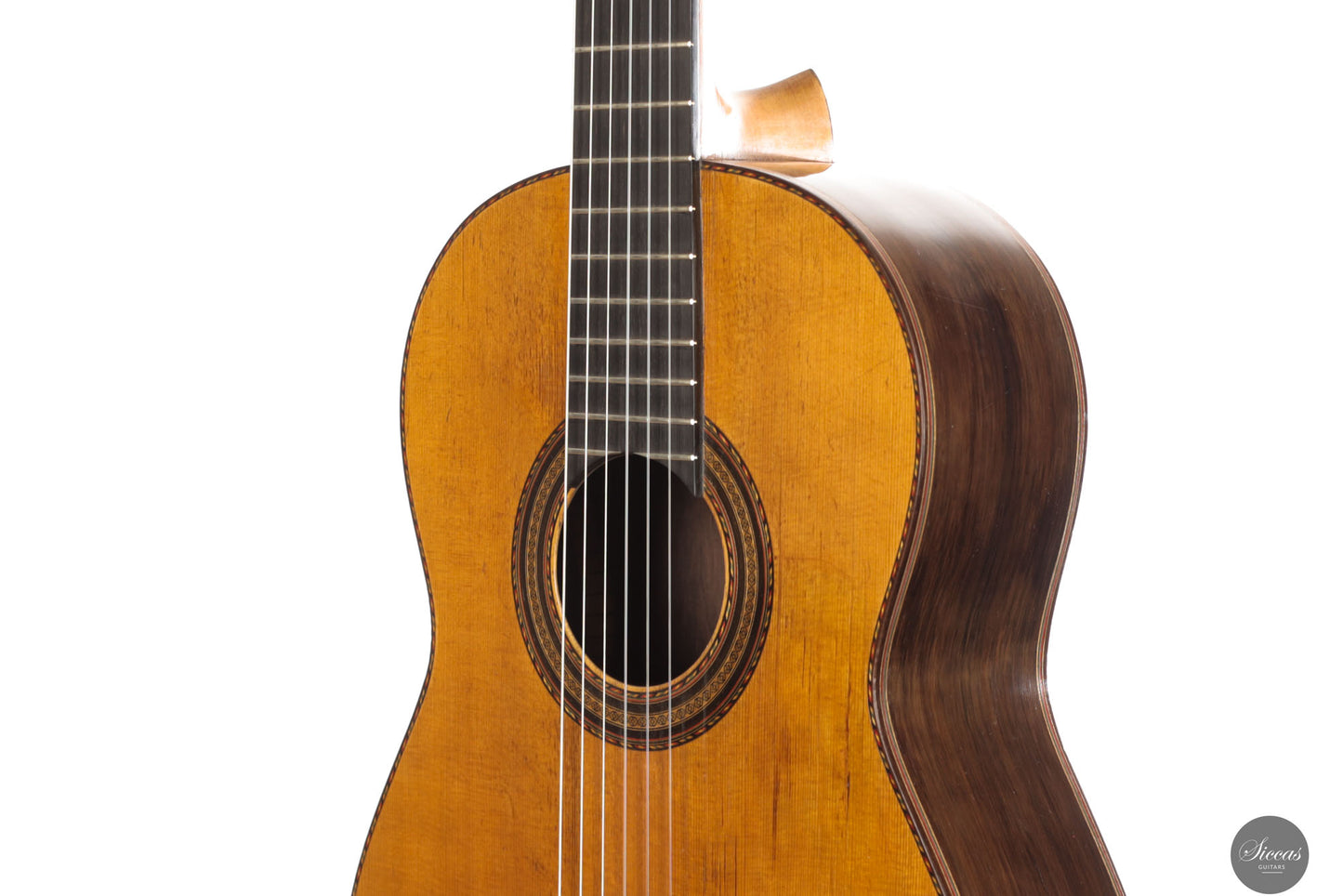
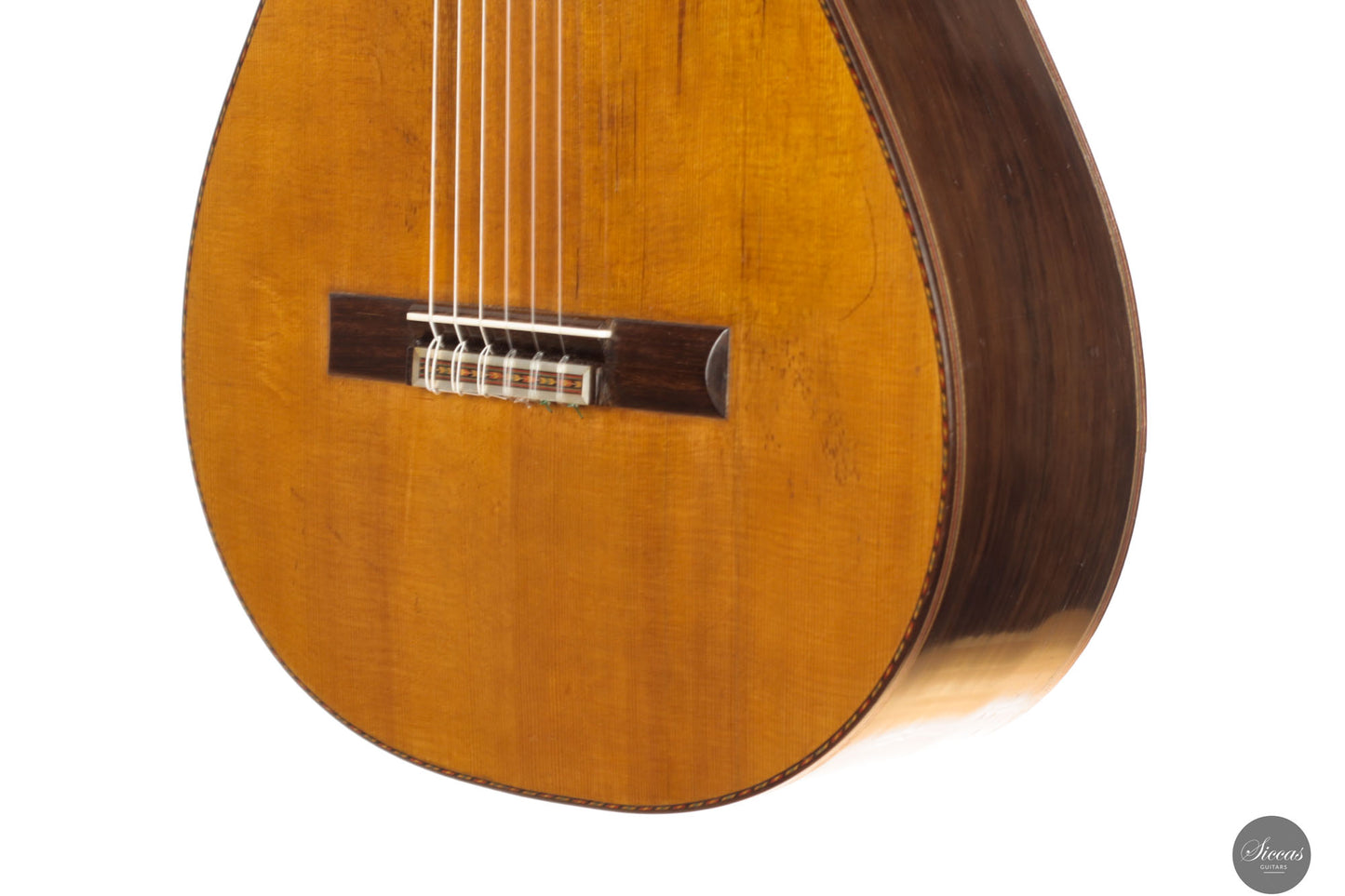
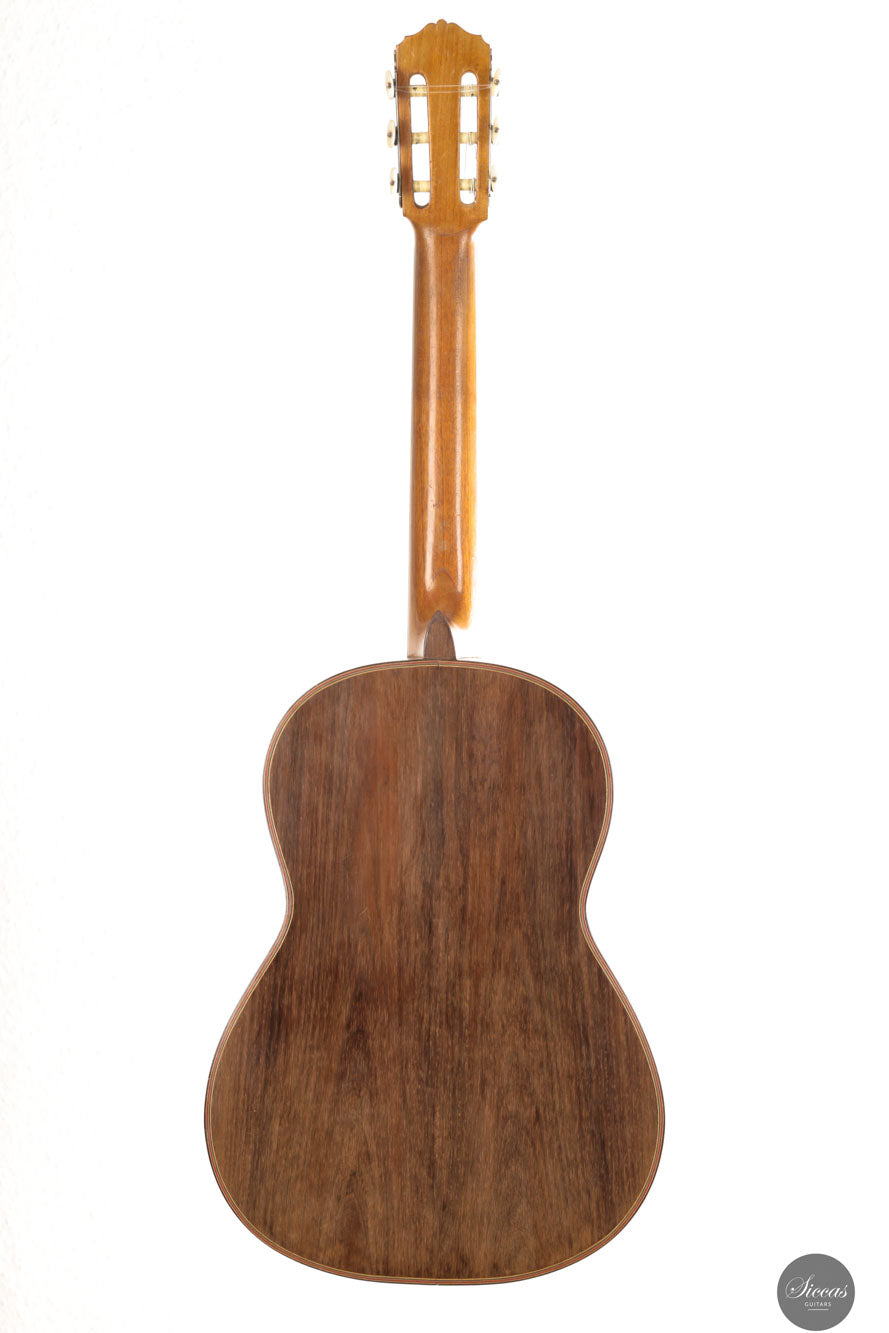
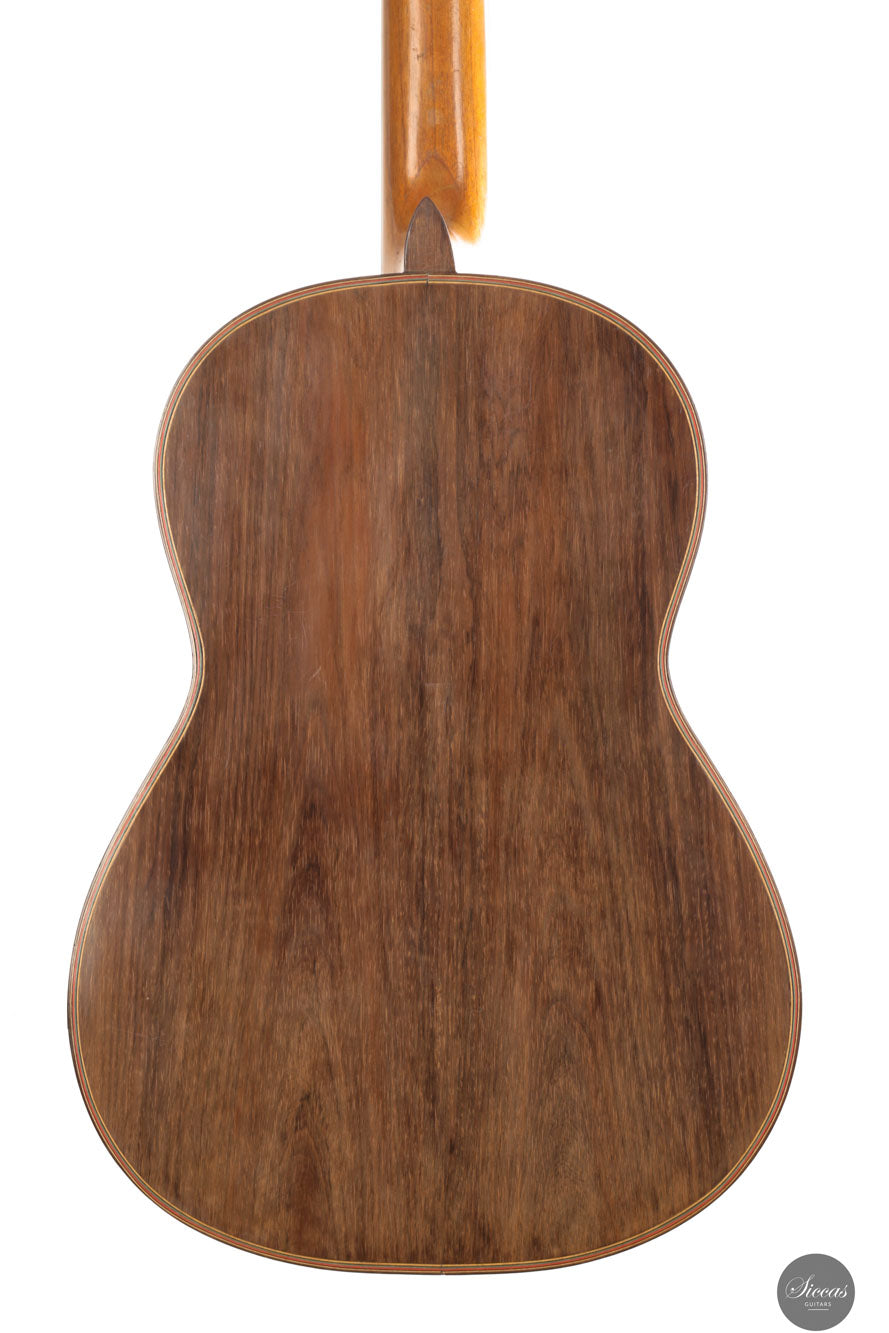
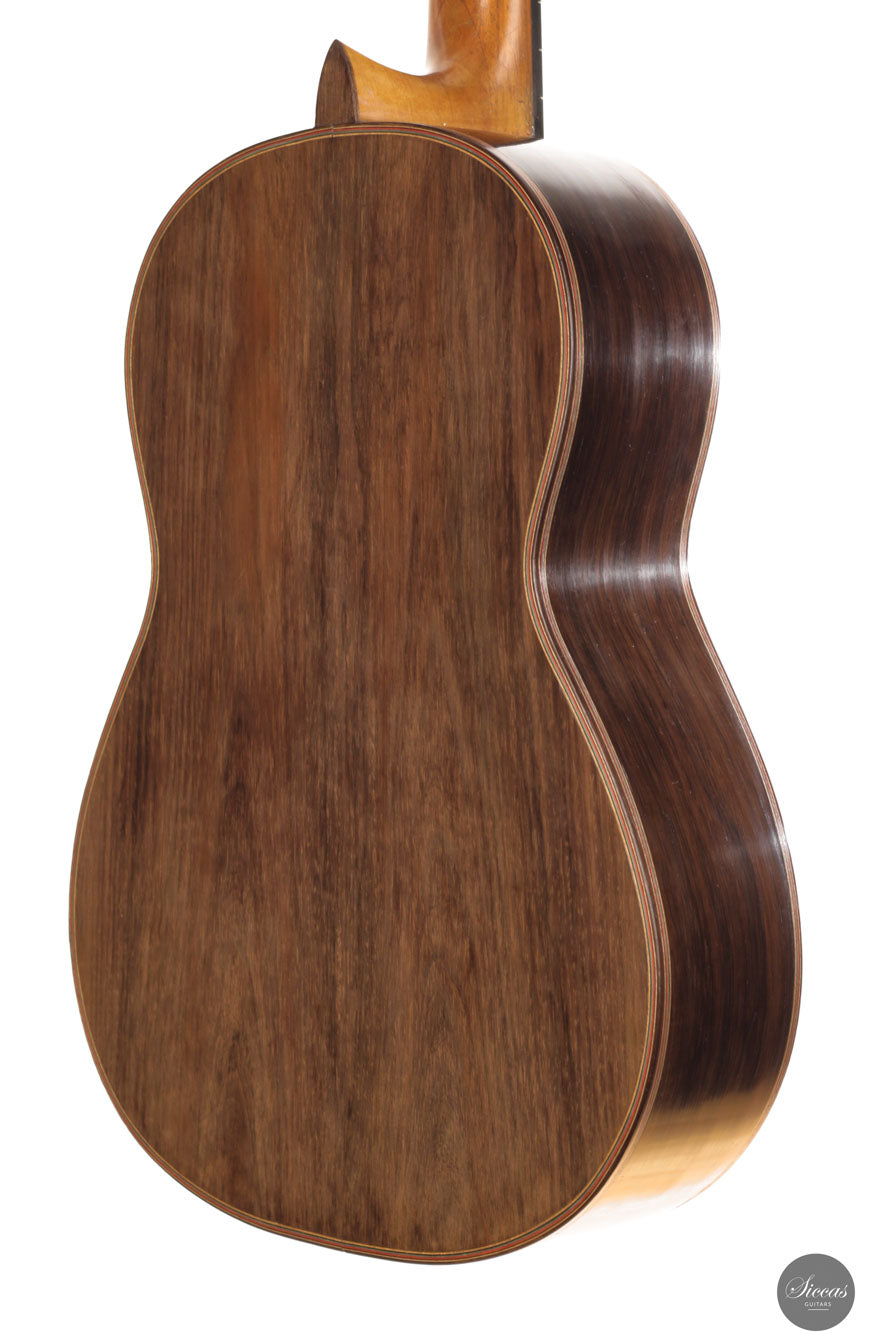

Video overview


More details about the guitar
About the luthier
Domingo Esteso López, born in San Clemente in 1882, was one of the most influential luthiers of the early 20th century. In the 1890s, he began his apprenticeship in the workshop of Manuel Ramirez in Madrid, working alongside other renowned luthiers such as Modesto Borreguero and Santos Hernandez. Following the death of Manuel Ramirez in 1916, Domingo worked for Ramirez’s widow before establishing his own workshop in 1917 on Calle Gravina in Madrid. In 1926, his nephew Faustino Conde joined the workshop, followed by his brothers Mariano Conde in 1929 and eventually Julio Conde. After Domingo Esteso’s passing in 1937, the three brothers continued crafting guitars under the name “Vda y Sobrinos de Domingo Esteso,” ensuring the legacy of his craft.About the guitar
Built in 1933 at the height of Domingo Esteso’s career, this extraordinary guitar is a rare and exquisite model with Brazilian rosewood back and sides. It embodies Esteso’s renowned purist design, characterized by simple yet elegant lines and intricate inlays. The French-style rosette exudes sophistication, while the headstock stands out as the most elaborate of Esteso’s models, reminiscent of the finest creations from the workshop of Manuel Ramirez. This guitar underwent a meticulous restoration by a professional luthier is Sevilla, in 2014. The expertly repaired cracks are not easily visible from the outside: two cracks located behind the bridge, three cracks located between the bridge and the soundhole, and two cracks located to the right of the soundhole. All cracks have been reinforced with cleats to ensure the long term stability of the repair, preserving both its structural integrity and its authentic, brilliant sound. There is also a very small crack on the side that has been glued as a preventive measure. Despite nearing its centenary, this instrument is vibrant, playful, and rich in tonal colors, a testament to its timeless craftsmanship. This guitar is a masterpiece of craftsmanship and a tonal treasure, representing the quintessence of Spanish sound from the early 20th century.Regular care extends the life of the instrument
Even with careful use, a classical guitar may gradually change in appearance or respond to unstable storage conditions. Have a close look at your guitar regularly and be attentif to changes. If your instrument is suffering from its environement, it will let you know.
Protect Your Guitar: Handle with Care
Be mindful when touching your instrument with greasy or unwashed hands: any skin contact is a small attack on the varnish. Of course, a guitar is made to be played, but taking a few precautions helps preserve its beauty: wash your hands before playing, wear long sleeves, and avoid unnecessary direct skin contact with the body of the instrument.
Pro tip: Avoid playing with a button-up shirt, heavy jewelry, or a belt, as these can scratch the guitar. Also, make sure your guitar case is free of any objects that could damage the instrument during storage.
String care
A good habit to adopt is wiping down your strings briefly after each playing session. This small action significantly extends their lifespan and helps maintain a consistent, comfortable feel under your fingers.
Most importantly, clean strings are essential for keeping your instrument in tune. Corrosion, sweat, and dust can affect the uniformity of the strings and interfere with accurate tuning across the entire fingerboard.
Pro tip: If you're having trouble getting your guitar in tune, it might be time to change the strings. A useful test is to compare the pitch of the 12th fret harmonic with the fretted note at the 12th fret; if there's an unusually large gap between them, your strings may have lost their integrity and should be replaced.
Keep Your Shellac Finish Shining!
Got a guitar with a shellac (French polish) finish? Here's a simple trick: Take a clean microfiber cloth and gently breathe on the surface to create a light mist. Then, softly rub to remove fingerprints, sweat, and grease. That’s usually all it takes to keep it looking great, no products needed!
Pro tip: Every few years, treat your guitar to a check-up with a luthier to keep it in top shape.
Storing Your Guitar: Climate Matters
Your guitar can safely stay outside its case, as long as the surrounding environment maintains 42–55% humidity and a temperature between 18–25°C.
Keep in mind that humidity levels can still fluctuate inside the case, especially during seasonal changes.
- Too much humidity may cause overtightened strings and a dull tone.
- Too little humidity can lead to a bulging top, string buzz, or even cracks.
Avoid placing your guitar near radiators, air conditioners, or windows with direct sunlight.
Pro tip: Always close your guitar case while playing. This helps preserve a stable microclimate inside the case, so your instrument is protected the moment you put it back in.



















































